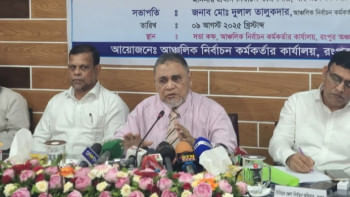Significance of autopsy report
Criminal Investigation is a science that involves study of facts, identification of the offender, location and proof of the guilt, collection and examination of the physical evidences to ensure punishments. Of the various scientific techniques employed by the modern-day criminal investigations, autopsy plays the most decisive role in resolving a case. Also known as post mortem examination, autopsy means to “see for yourself”. It is a special surgical operation, performed by specially trained physicians, on a dead body with a view to discovering the cause of death.
The legal provisions on post mortem examination are enshrined in section 174 of the Code of Criminal Procedure (CrPC) and sections 303 to 308 of the Police Regulations of Bengal (PRB). According to law, the procedure of post mortem is preceded by an inquest investigation conducted by the officer in charge of the concerned police station. The police officer shall send the dead body for post-mortem examination to the nearest Civil Surgeon where there is any doubt regarding the cause of death, or when for any other reason the police-officer considers it expedient so to do. The dead body must be accompanied by a copy of surat hal report and a challan in triplicate in B.P. Form No. 49. On completing the post-mortem examination, the medical officer shall prepare a report in the B.P. Form No. 50 and a copy thereof shall be forwarded to the Superintendent of Police who shall cause the same to be laid before the court concerned.
A post-mortem report is the best evidence of an unnatural death that is admissible in evidence before the court as an expert opinion. Every criminal case has two major parts, i.e. the presentation of evidence and the presentation of witnesses. When the expert is summoned by the court as a witness, the submission of his findings is an expert opinion and when he corroborates these findings with the autopsy report, this becomes the most reliable evidence in the eye of law. In Hadiuzzaman V The State, BLD (AD) (1986) 191, it was held that the deposition made by the medical officer on oath is a substantive piece of evidence, whereas his medical certificate is a corroboration of his evidence on oath.
In our country, medico-legal investigations lags behind the normal standard followed. In the cities where a government medical college is available any academic staff of forensic medicine department is empowered to perform an autopsy otherwise, by the civil surgeon in the district hospitals. However, in practice, reality is far from these words. It is seen in most of the district hospitals that untrained doctors from any branch are involved in the procedures of post mortem. They are not especially trained but chosen from other duties on a particular day. Therefore, they just sign the reports and the entire activities are performed by dooms.
The post-mortem report helps the police officer come up with a reasonable conclusion as to the actual cause of death. Hence he will have to go through the report very carefully as each and every word of the report is very significant for the investigation into the cause and manner of death. Unfortunately, most of the investigation officers do hardly understand the post-mortem report as the same is written in the language of medical science. As per section 306(b) of the PRB, police officers shall refer to the Civil Surgeon if they have any doubt in regard to any part of the medical report but the real scenario is totally different. Even the situation goes the worst when the post-mortem report does not contain the actual cause of death. As a result, thousands of deaths buried without proper investigation in Bangladesh.
The law provides the judges with absolute discretion to decide the admissibility and reliability of the autopsy report through the process of examination of the concerned expert. But it is seen that most of the lawyers and even judges do not have sufficient training and expertise as to how the post mortem reports are to be utilised for the purpose of justice. So the experts, during deposition in courts have to face some questions from the judges and lawyers those are not only irrelevant but also embarrassing.
There should be coordination among police, judges, magistrates, lawyers and forensic medicine experts to ensure a high standard of medico-legal investigation. To this end, there should be a provision of six months intensive training for newly recruited police officers, judges and lawyers to be enrolled in Bangladesh Bar Council.
THE WRITER IS LECTURER, DEPARTMENT OF LAW & JUSTICE, SOUTHEAST UNIVERSITY

 For all latest news, follow The Daily Star's Google News channel.
For all latest news, follow The Daily Star's Google News channel. 



Comments